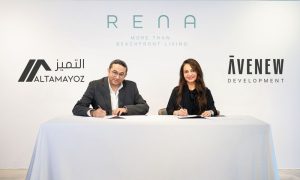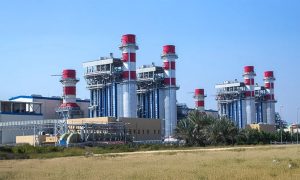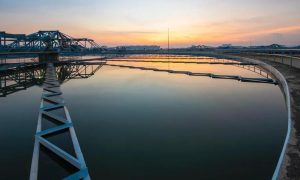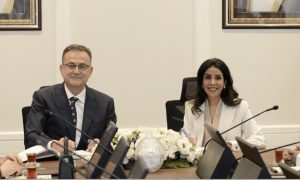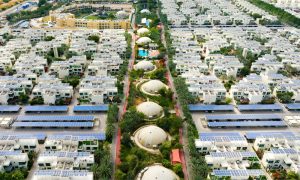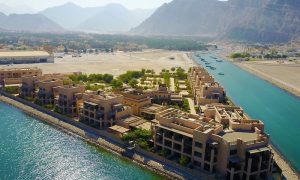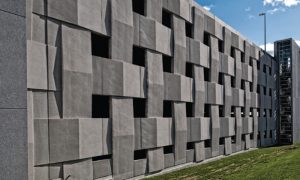Runaway Success
TAV’s work on New Doha International

Turkish contractor TAV won the contract for New Doha International Airport’s passenger terminal complex in 2006. Working alongside projects partners Taisei Corporation and Engineers Bechtel Incorporated, the venture is executed under the direction of Qatar’s Government and a specificly appointed steering committee.
At peak of TAV’s involvement as contractor for the Passenger Terminal Complex, there were 20,000 labourers and 3500 engineers on the 600,000 kmsq site.
International reports estimate the budget for the entire NDIA project, stands at US$11.1billion.
“Coordination of this multi-national workforce is a great challenge,” says TAV’s Gulf regional director Yusuf Akcayoglu.
“Procurement and logistics were tremendous challenges on this project. To coordinate and ensure the timely delivery of thousands of materials, systems coming from hundreds of suppliers, we employed a team of 100 at our procurement department,” he adds.
The eye catching architecture, while iconic, also added to the complicated logistics. To create the wave effect – a feature inspired by the waves of the Arabian Gulf – 70,000 tons of structural steel was erected.
TAV’s responsibilities in the project include the construction of the main terminal building, where a huge retail area will be supported by a 100 room hotel inclusive of spa facilities; seven-star lounges; 102 check in counters; and 33 boarding gates.
In addition, TAV will construct concourses A, B and C; the vertical circular node; and the elevated roadway.
“New Doha International Airport will soon be the hub to the nation’s glorious airline. We are delighted to have the opportunity to showcase the quality of our work to millions of passengers that will pass through the airport as Qatar Airways continues its exponential growth.
“We believe that this project will be another reflection of the close ties between Qatar and Turkey.”
Green air
It may be intended for an industry perceived to be one of the least ‘green’ in the world, but the carbon footprint of the airport will be dramatically reduced due to a number of measures taken in the design and construction of the terminal.
Insulation and low reflective materials have been applied to reduce the impact of the soaring desert temperatures and the terminal building façade has rotating, moveable louvers, to optimise sunlight exposure.
“By optimising the sunlight radiating into the terminal building, the interior lighting and temperature levels are automatically controlled,” Akcayoglu explains, adding: “Carbon-dioxide sensors, deployed within various sections of the terminal building, monitor the occupancy in the building in order to adjust flow of conditioned air inside the terminal building; which eventually reduces the load on equipment.”
Supporting these measures is a waste and waste water infrastructure described by Akcayoglu as “massive”.
The measures all fall under the firm’s HSE policy, which facilitated the achievement last year of 65 million man-hours without fatality or lost time to injury, by Bechtel, who on behalf of the Employer, NDIA Steering Committee, awarded the 2011 NDIA Project Contractor of the Year award to Sky Oryx Joint Venture; where 100 different contractors are evaluated.
“We had a challenging schedule to meet. We never compromised safety or quality at construction and the main criteria for our award was outstanding performance coupled with adherence to safety and quality at work,” Akcayoglu recalls.
The latest safety figures were released in January of this year and also show that first aid injury saw a 75% reduction over 2011.
Future models
The project may be a milestone for Qatar, but it’s far from a first in TAV’s aviation portfolio.
From the first project on the Istanbul Atatürk International Airport in 1997, the contracting giant has completed no less than nine airport projects in Turkey, Dubai, Egypt, Macedonia and Georgia, and currently has a further four under development in Qatar, Oman, Libya and Saudi Arabia.
“With our success at large-scale airport developments, we are one of the globally leading contractors for this industry and Engineering News Record, one of the most reputable publications recognised by the construction industry, ranks us among the top five airport contractors in the World since 2008,” says Akcayoglu continuing to say that the next step is to achieve first position.
In Muscat, the contract for work on the city’s International Airport covers an airside and landside infrastructure construction package including the runway-apron-taxiway systems.
Elsewhere, Akcayoglu lists Abu Dhabi’s Midfield Terminal Complex package; the new passenger terminal at Kuwait’s International Airport; and the terminal expansion project at Bahrain International Airport as being “on our radar”.
In Saudi Arabia, TAV leads a consortium of national conglomerates; Saudi Oger and Al Rajhi Holding and will be responsible for the design, build and operation of the airport for 25 years. Upon completion of the Medina Prince Abdulaziz International Airport, passenger capacity will increase to 16 million within a decade. With a first phase expansion budget of more than $1 billion, the airport is the first fully-fledged PPP airport project in the GCC.
While Akcayoglu highlights such models are usually implemented when there is a shortage of funding, he explains that the application of this financing structure in the Middle East can enhance the efficiency and effectiveness of the development and incentivise all parties to shorten the period before ROI is achieved.
“The PPP model optimises each party’s interests and the public sector still has the final word on decisions taken for the development. The expert company or group brings in the know how, operational experience and financing into the picture in a more timely and less complex manner.
“Hence, the consortium that undertakes the contract is encouraged to make the development operational rapidly, as the early completion means early revenue generation,” he says, continuing to list further benefits as the added value a completed project brings to the country and the mitigation of “discrepancies” during the operation readiness/ airport transfer stage (ORAT), which therefore speeds up the process.
“The implementation of PPP at Medina Airport will prove that this model is doable. Therefore, in the Gulf, I think that we may hear some more transportation projects awarded under the same scheme in the near future.”
